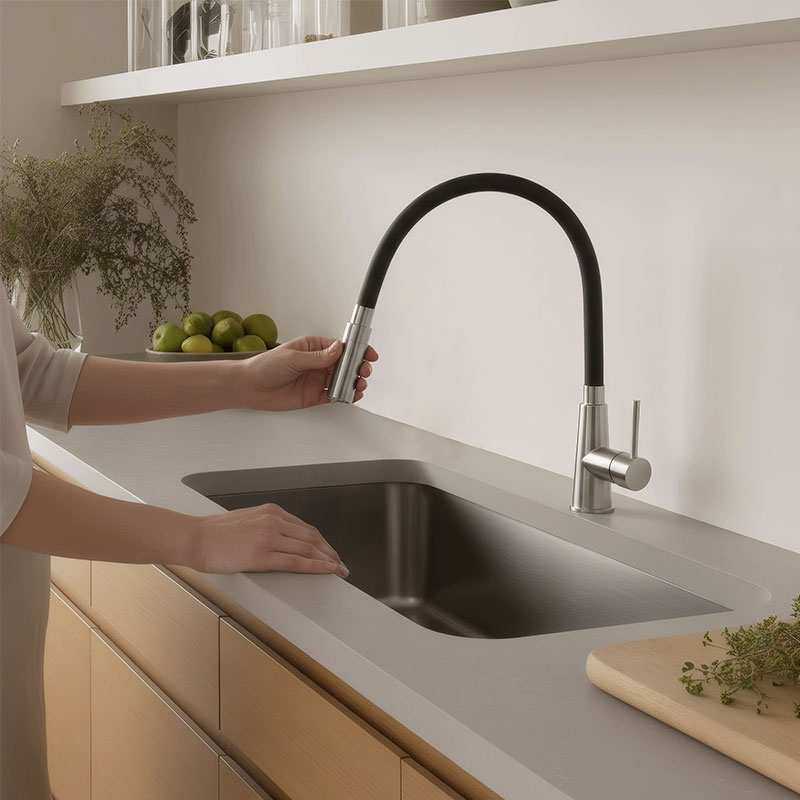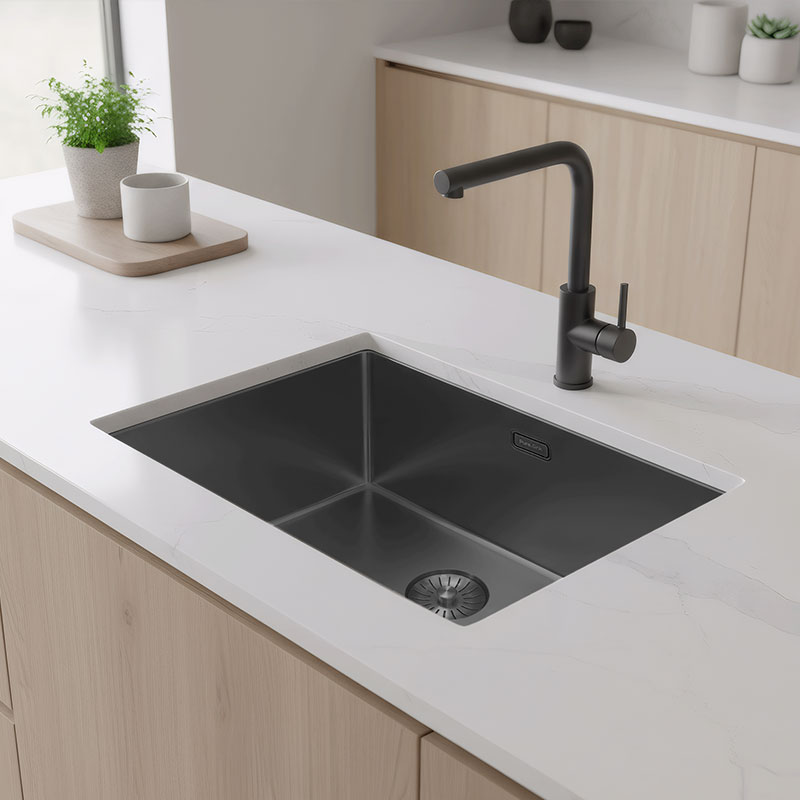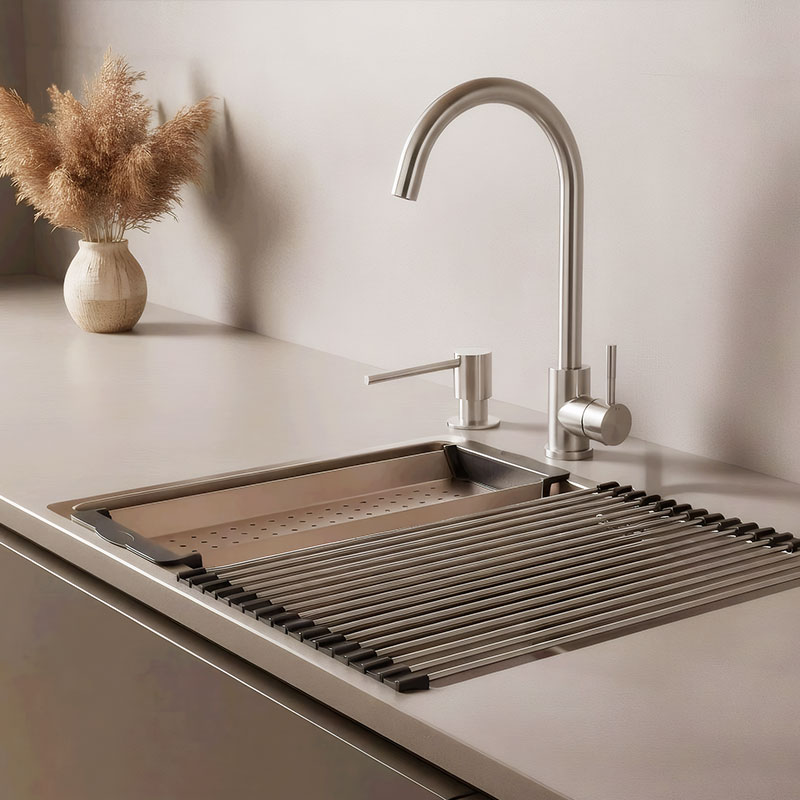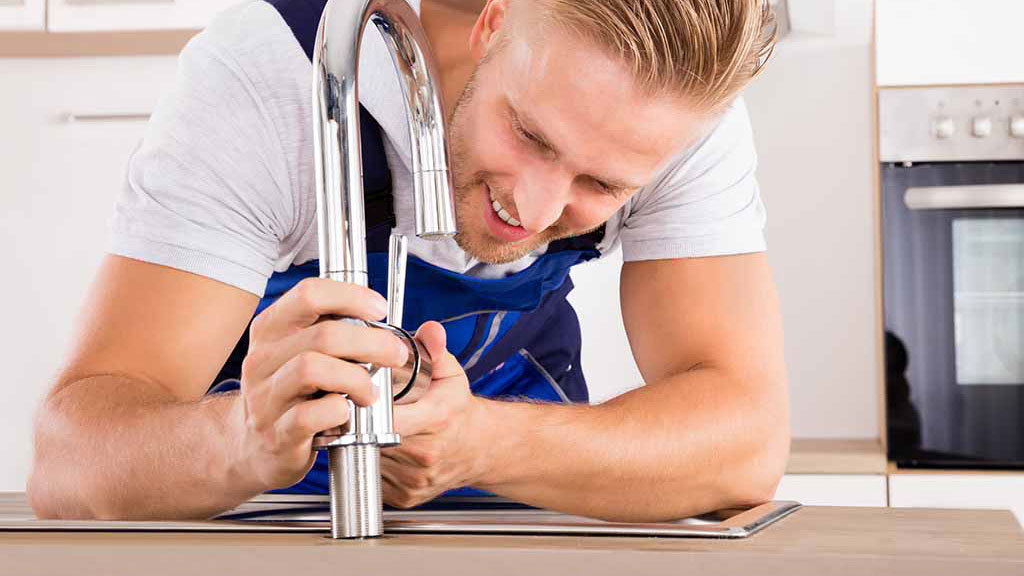Have you your own wishlist? Create an account or Login to save your favorite products
















There are 3 different types of kitchen faucets, each with its own assembly instructions:
A 1-hole kitchen faucet needs a European standard tap hole of 35mm. Because this is a standard size, it can always be replaced by another faucet when the kitchen faucet needs replacement. Before mounting the kitchen faucet on the countertop or kitchen top, you need to know the thickness of the kitchen top. Most kitchen faucets are suitable for a kitchen worktop thickness of 40mm. Before you purchase a kitchen faucet, measure the thickness of the top.
Almost every kitchen faucet comes with 3/8" or 1/2" flexible hoses that you can screw onto the connection on the wall. We always recommend installing angle stop filter faucets on the water supply first to stop dirt and large pieces of lime scale. Because the dirt does not get into the interior of the faucet, the life of the faucet will be extended. In addition, because it is a stop tap, you can replace the kitchen faucet if necessary by just closing the stop taps without shutting off the main water line.
Always flush the water lines before installing a new kitchen faucet. When connecting to new pipes, there may be dirt, dust or burr residue in the pipes. When putting water pressure on these new pipes without flushing these pipes first, this dirt can get into your faucet and therefore into your kitchen faucet's inner workings. There is then a chance that the new faucet will drip/leak immediately afterwards. This is because the inner workings in your faucet are damaged by the dirt in your pipes.
All faucets of the better brands are pre-tested and pressurized at the factory. So these leave the factory working, are then checked to be complete and undamaged. After this check, the box is sealed and sent to the supplier. Should you open sealed packaging of your kitchen faucet and there is some water in the box you will know that this is from testing the faucet from the factory.




















